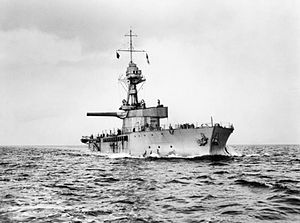
HMS Erebus was a First World War monitor launched on 19 June 1916 and which served in both world wars. She and her sister ship Terror are known as the Erebus class. They were named after the two bomb vessels sent to investigate the Northwest Passage as part of Franklin's lost expedition (1845–1848), in which all 129 members eventually perished.

The M29 class comprised five monitors of the Royal Navy, all built and launched during 1915.

HMS Raglan was a First World War Royal Navy Abercrombie-class monitor, which was sunk during the Battle of Imbros in January 1918.

The Abercrombie class of monitors served in the Royal Navy during the First World War.

HMS Terror was an Erebus-class monitor built for the Royal Navy during the First World War in Belfast. Completed in 1916, she was assigned to the Dover Patrol where her primary duties involved bombarding German targets on the coast of occupied Belgium, particularly at the ports of Zeebrugge and Ostend. In October 1917 Terror was hit by three torpedoes, taking severe damage to the bow, and had to be towed into Portsmouth for repair. In April 1918 she participated in the Zeebrugge raid and provided gunnery support for the Fifth Battle of Ypres in September of the same year.

The Erebus class of warships was a class of 20th century Royal Navy monitors armed with a main battery of two 15-inch /42 Mk 1 guns in a single turret. It consisted of two vessels, Erebus and Terror, named after the two ships lost in the Franklin Expedition. Both were launched in 1916 and saw active service in World War I off the Belgian coast. After being placed in reserve between the wars, they served in World War II, with Terror being lost in 1941 and Erebus surviving to be scrapped in 1946.

The Lord Clive-class monitor, sometimes referred to as the General Wolfe class, were ships designed for shore bombardment and were constructed for the Royal Navy during the First World War.

The Roberts class of monitors of the Royal Navy consisted of two heavily gunned vessels built during the Second World War. They were the Roberts, completed in 1941, and Abercrombie, completed in 1943.

HMS Queen was a member of the London class of pre-dreadnought battleships built for the British Royal Navy. The Londons were near repeats of the preceding Formidable-class battleships, but with modified armour protection. Due to slight differences between Queen and HMS Prince of Wales and the other Londons, they are sometimes referred to as the Queen class. The ship's main battery consisted of four 12-inch (305-mm) guns, and she had top speed of 18 knots. The ship was laid down in March 1901, was launched in March 1902, and was completed in March 1904. After commissioning in April 1904, she served with the Mediterranean Fleet until 1906, when she returned to Britain before embarking on another stint with the Mediterranean Fleet later that year. Queen was transferred back to the United Kingdom in 1908 and thereafter served in the Atlantic Fleet, the Home Fleet, and finally the 5th Battle Squadron of the Second Fleet in 1914.

HMS Marshal Ney was the lead ship of her class of two monitors built for the Royal Navy during the First World War. Laid down as M13, she was renamed after the French field marshal of the Napoleonic Wars Michel Ney. After service in the First World War, she became a depot ship and then an accommodation ship. Between 1922 and 1947, she was renamed three times, becoming successively Vivid, Drake and Alaunia II. She was scrapped in 1957.

HMS General Craufurd was the one of eight Lord Clive-class monitors built for the Royal Navy during World War I. Their primary armament was taken from obsolete pre-dreadnought battleships. The ship spent the war in the English Channel bombarding German positions along the Belgian coast as part of the Dover Patrol. She participated in the failed First and Second Ostend Raids in 1918, bombarding the defending coastal artillery as the British attempted to block the Bruges–Ostend Canal. Later that year General Craufurd supported the coastal battles during the Hundred Days Offensive until the Germans evacuated coastal Belgium in mid-October. The ship was decommissioned almost immediately after the war ended the following month, but she was reactivated in 1920 to serve as a gunnery training ship for a year. General Craufurd was sold for scrap in 1921.
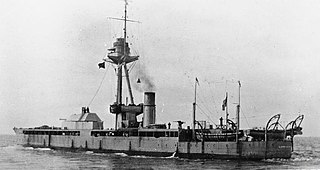
HMS Lord Clive was the lead ship of her class of eight monitors built for the Royal Navy during World War I. Their primary armament was taken from obsolete pre-dreadnought battleships. The ship spent the war in the English Channel bombarding German positions along the Belgian coast as part of the Dover Patrol, often serving as a flagship. She participated in the failed First Ostend Raid in 1918, bombarding the defending coastal artillery as the British attempted to block the Bruges–Ostend Canal. Lord Clive was one of two ships in the class fitted with a single 18-inch (457 mm) gun in 1918, but she only fired four rounds from it in combat before the end of the war in November. The ship conducted gunnery trials after the war and was sold for scrap in 1927.

HMS Marshal Soult was a Royal Navy Marshal Ney-class monitor constructed in the opening years of the First World War. Laid down as M14, she was named after the French general of the Napoleonic Wars Marshal Nicolas Jean de Dieu Soult. She served in both World Wars and was decommissioned in 1946.
HMS Sir John Moore was one of eight Lord Clive-class monitors built for the Royal Navy in 1915 to conduct shore bombardments during the First World War. The ship was assigned to the Dover Patrol for the duration of the war and was sold for scrap in 1921.

The Humber-class monitors were three large gunboats under construction for the Brazilian Navy in Britain in 1913. Designed for service on the Amazon River, the ships were of shallow draft and heavy armament and were ideally suited to inshore, riverine and coastal work but unsuitable for service at sea, where their weight and light draft reduced their speed from a projected twelve knots to under four. The class comprised Humber, Mersey and Severn. All three were taken over by the Royal Navy shortly before the outbreak of the First World War and were commissioned as small monitors. All three saw extensive service during the war and were sold in 1919.
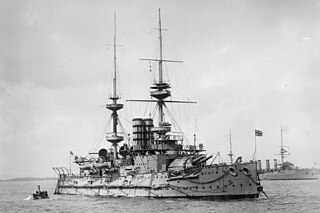
HMS Mars was a Royal Navy pre-dreadnought battleship of the Majestic class, the seventh member of a class of nine ships. The ship was laid down in the Laird Brothers shipyard in June 1894, she was launched in March 1896, and she was commissioned into the fleet in June 1897. She was armed with a main battery of four 12-inch (305 mm) guns and a secondary battery of twelve 6-inch (152 mm) guns. The ship had a top speed of 16 knots.

The M15 class comprised fourteen monitors of the Royal Navy, all built and launched during 1915.

HMS Teazer was an R-class destroyer which served with the Royal Navy during World War I. The destroyer was launched in April 1917 and, on trial, proved to be one of the fastest afloat, exceeding 40 knots. Attached to the Harwich Force, the ship supported the monitors Erebus, Terror and Marshal Soult in the bombardment of Zeebrugge in May 1918 and one of the final sorties of the war in the October following. The destroyer also took part in operations off the coast of Heligoland with a flying boat on a lighter, although the aircraft failed to take off. After the war, Teazer was kept in reserve until being sold to be broken up in 1931 following the signing of the London Naval Treaty that limited total destroyer tonnage.
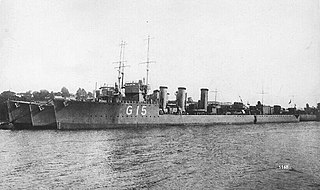
HMS Rowena was an R-class destroyer which served with the Royal Navy during World War I. Launched on 1 July 1916, the ship operated as part of the Grand Fleet as part of a destroyer flotilla hunting for German vessels that were attacking convoys in the North Sea. Although there were many reported sightings, no submarines were sunk. After the conflict, the vessel was transferred to the Navy’s establishment at Portland to help in the development of anti-submarine warfare, which ultimately helped in the Battle of the Atlantic. Rowena did not, however, see the fruit of this labour. After twenty years of service, the destroyer was retired and sold to be broken up on 27 January 1937.
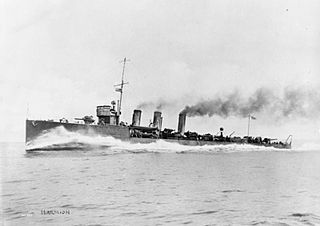
HMS Moorsom was an Admiralty M-class destroyer which served in the Royal Navy during the First World War. The M class was an improvement on the preceding L class, capable of higher speed. Moorsom, the first ship to enter navy service to be named after Admiral Sir Robert Moorsom, was launched in December 1914, initially serving as part of the Grand Fleet before being transferred to the Harwich Force the following year. Briefly rejoining the Grand Fleet, the destroyer saw service in the Battle of Jutland in 1916 supporting the British battlecruisers and received hits from a battleship of the German High Seas Fleet. Moorsom also undertook other duties, including escorting the troop ship Mauretania in June 1915 and the minelayer Princess Margaret in August 1915 and November 1916. Placed within the Dover Patrol, the destroyer formed part of the cover for monitors including Erebus and Terror on attacks on Ostend and Zeebrugge in May and June 1917, and April and May 1918. After the Armistice, the destroyer was placed in reserve and subsequently sold to be broken up in November 1921.
